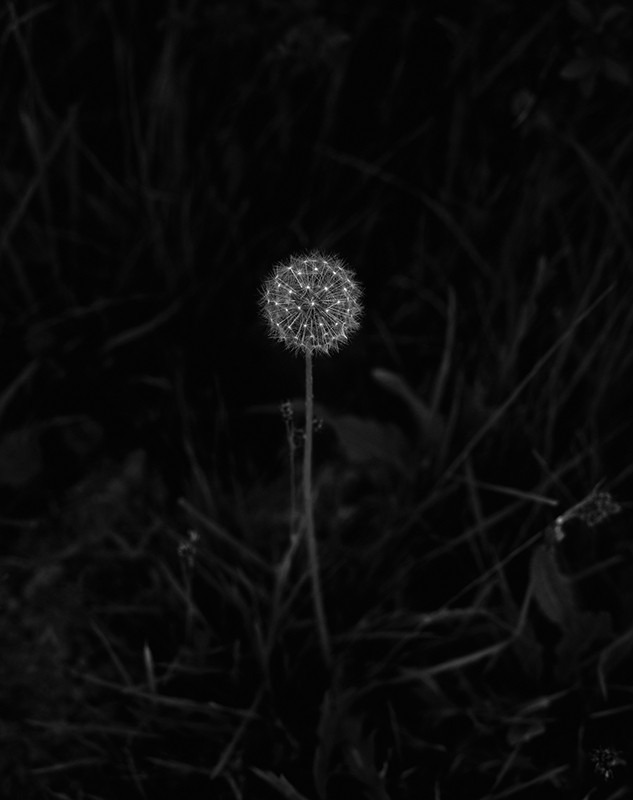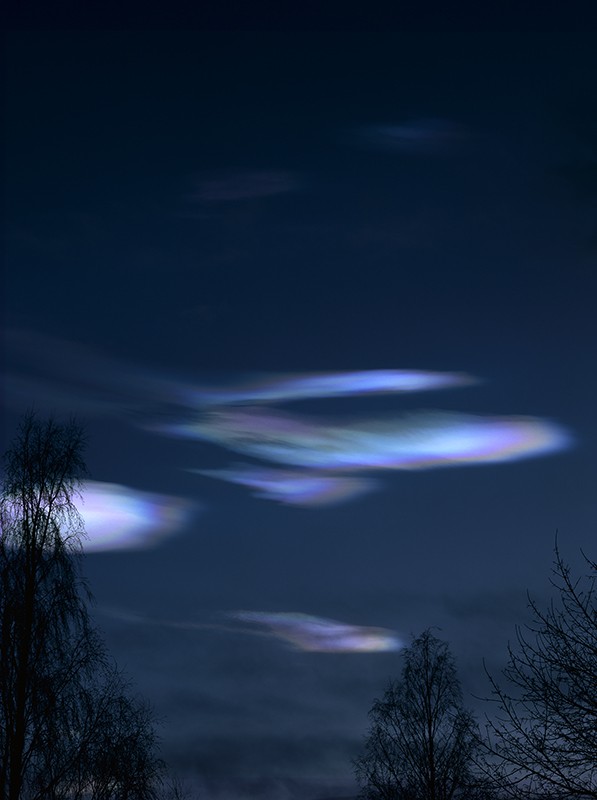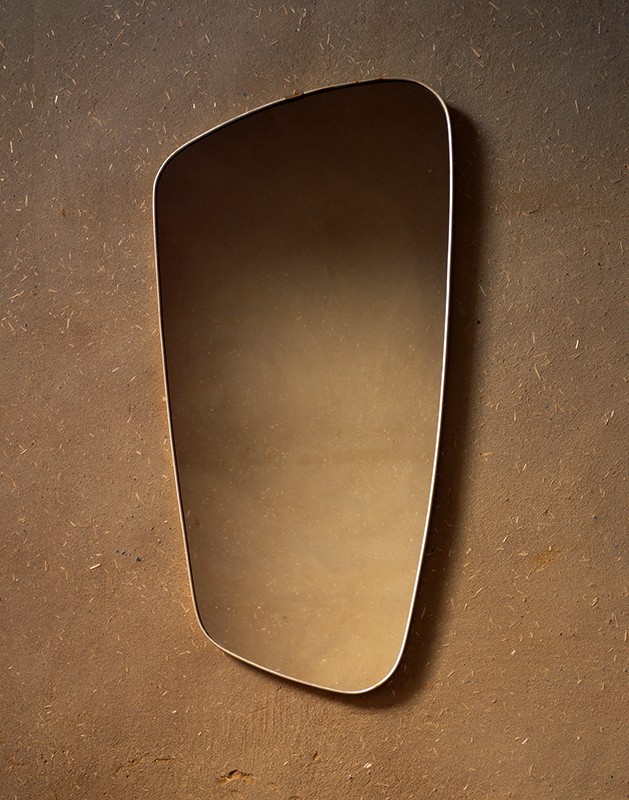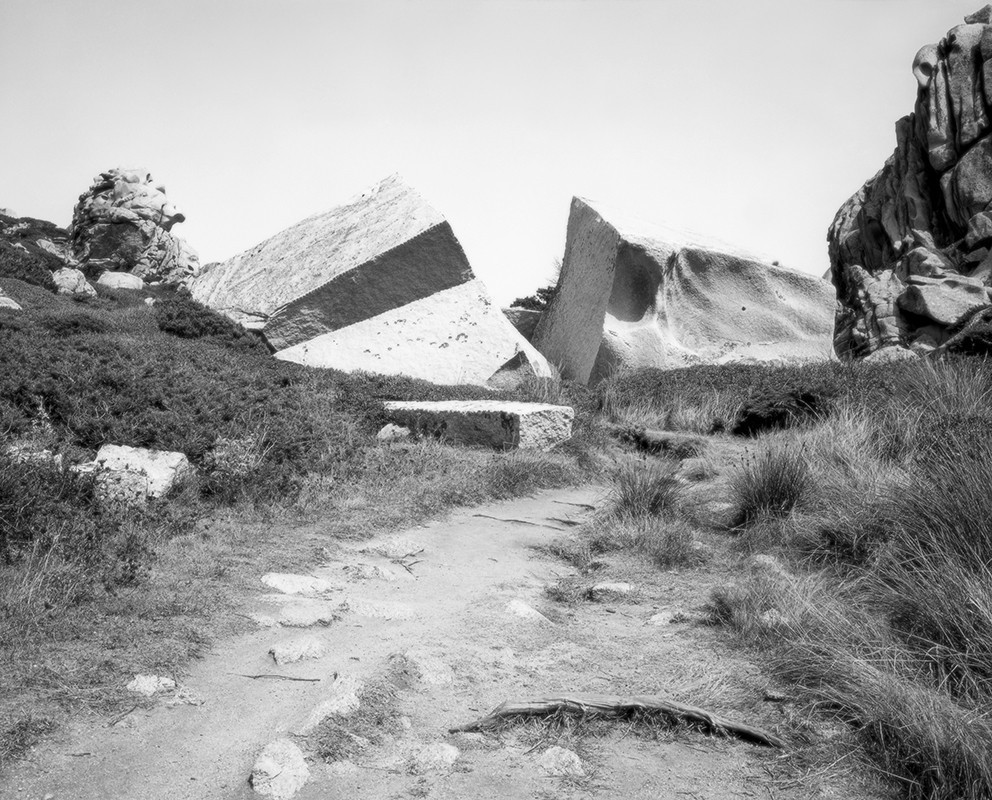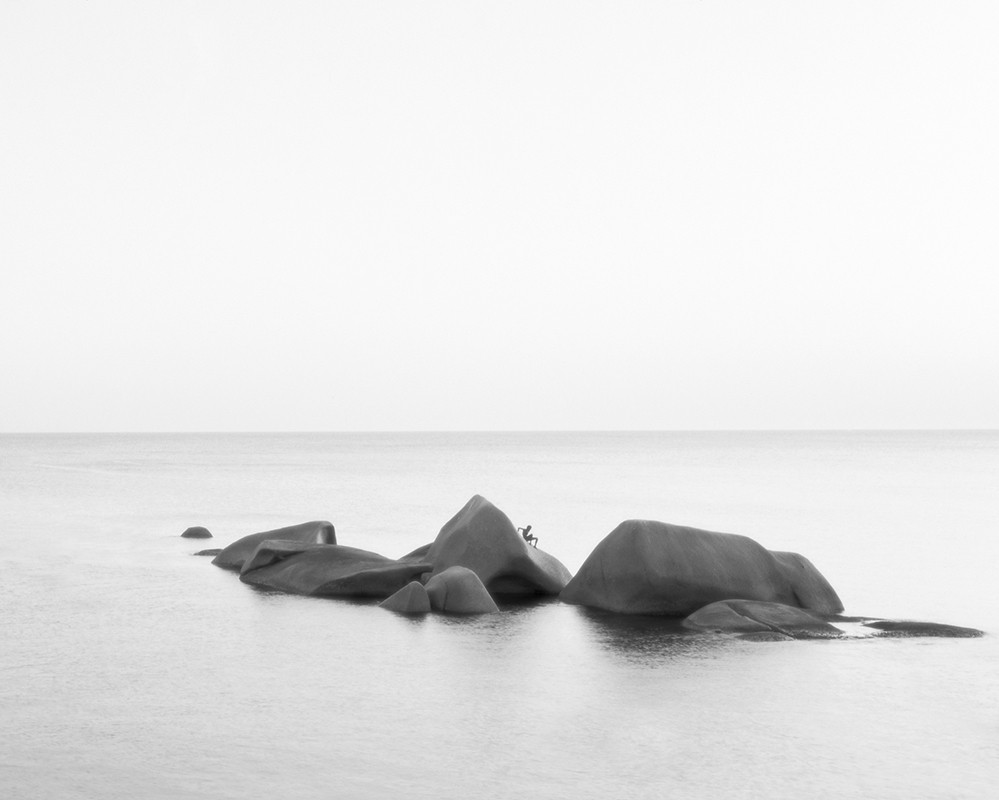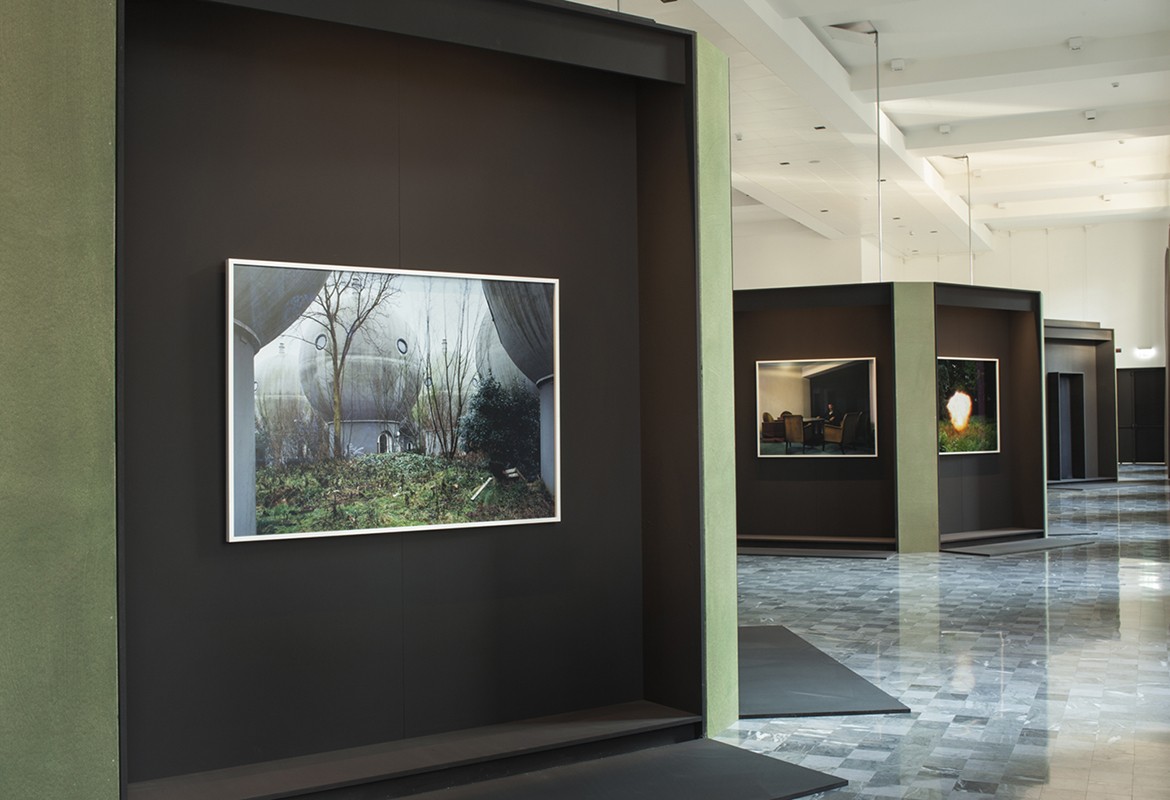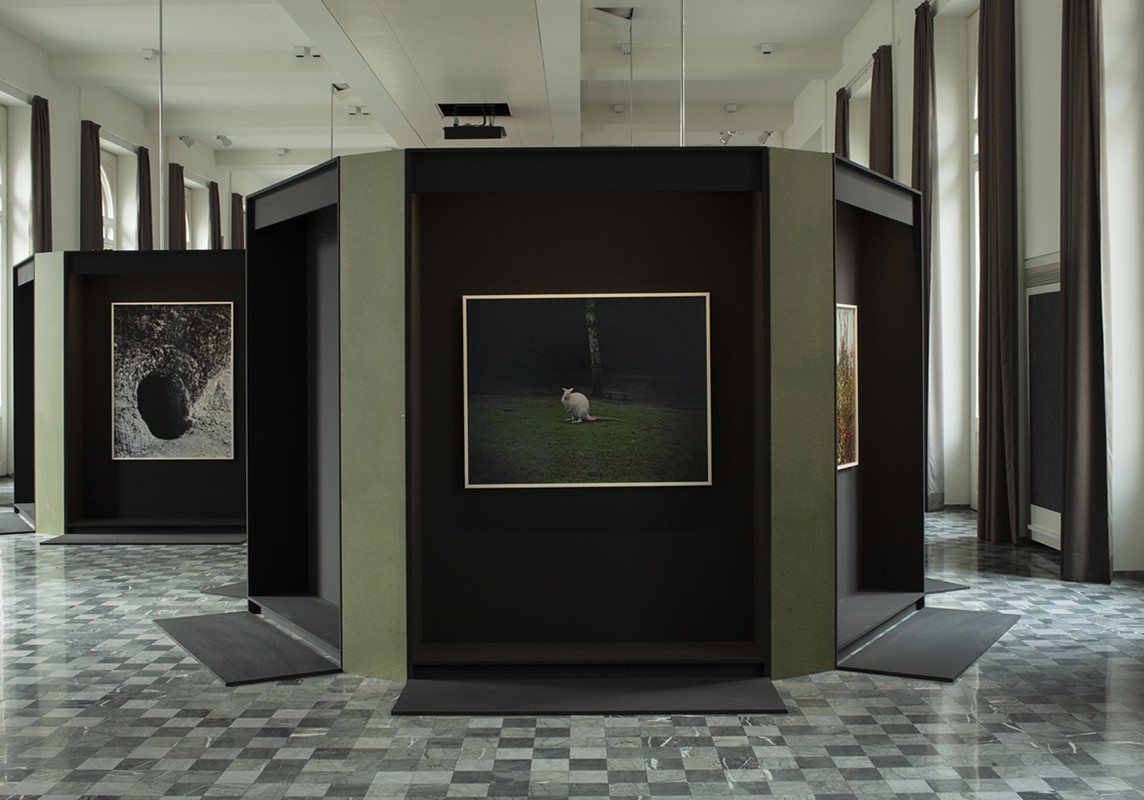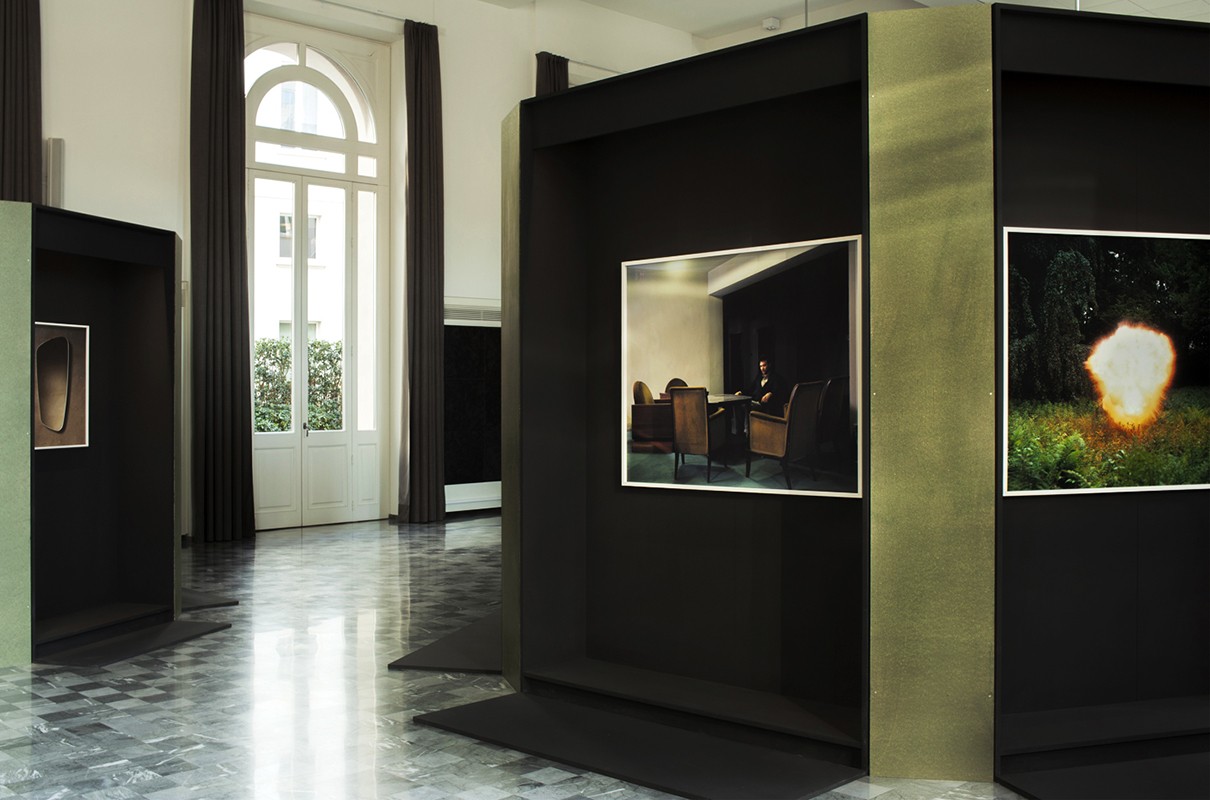GEERT GOIRIS
TERRAFORMING FANTASIES
29 January 2019 – 24 February 2019, Salone Banca di Bologna – Palazzo De’ Toschi
Curated by Simone Menegoi

Geert Goiris, Ecologist place, 2006
The exhibition
The first solo exhibition in Italy by Belgian photographer and videomaker Geert Goiris (born 1971 in Bornem, Belgium, based in Antwerp), whose works have been shown by prestigious museums around Europe, includes a selection of photographic prints in different formats, an analogue slide show, and a multichannel video installation and features an ambitious, innovative design conceived for the occasion by architect Kris Kimpe, the artist’s longtime collaborator.
The large space will be filled with hexagonal display units, some of them closed, others open and accessible, each housing photographs or moving images on its walls. The irregularly arranged modules offer a full-immersion experience, yet allow visitors to choose their own path through the show.
This exhibition in Bologna is closely linked to Goiris’s solo show at the Royal Academy of Fine Arts in Antwerp, scheduled for November and December 2018. The artist developed them parallel to each other, creating two mirror-image projects in which many of the works are the same—yet appear completely different in each space, underscoring its unique qualities.
The title, Terraforming Fantasies, is borrowed from the video installation in the show. ”Terraforming” is a recent coinage mostly used in speculations about the future of our species, and describes the possibility of chemically altering the atmosphere of other planets to make them resemble Earth and support human life. It is an idea that for the moment seems like science fiction, but its tacit assumption can be easily guessed: the ambition to colonize other planets reveals a deep unease about the health of our own, given the threat of ecological disaster. As Goiris explains, “It is misleading to think about terraforming at this stage. In itself it’s an interesting concept, but we absolutely lack the technology and resources to actually do it (let alone the morality). However, dreaming about it is very human: ambitious and at the same time tragically remote.” The exhibit design is also connected to this theme: “The display concept brings a constellation of extraneous objects into the space. It is, to some degree, out of place, a form of colonization. My intention (and hope) is for it to also say something about human characteristics such as wonder, curiosity, perplexity, and so on. By carefully selecting the images and presenting them in a carefully chosen setting, I’m trying to plunge viewers into a parallel world, one that may resemble our own, but does not completely match up with it.”
Though it sometimes includes interiors and the human figure, Geert Goiris’s work in photography and video is focused above all on the landscape. Whether his locations are farflung (ranging from the Antarctic to the Danakil Desert in Ethiopia) or closer to home, Goiris makes them look uncannily suspended, as if they came from another planet. This is achieved though specific technical and stylistic choices: the artist primarily uses a largeformat camera with special types of film (orthochromatic, aerial, infrared). He shoots most of his pictures at dusk, when the light is beginning to fade and become unreliable. His working method is a blend of preparation and chance: Goiris uses the camera with the precision of a weathered professional, but during the long exhibition times that he favors, anything can happen, and there is no way to predict exactly how the film will transform the subject into an image. The camera is never a mere conduit through which we can visually connect with the outside world, but a tool for exploring the gap between our “experience” of it and the act of seeing it for what it is. Like the French philosopher and photographer Jean Baudrillard, Goiris seems to understand that the camera is on the side of the world, offering us a glimpse of what it looks like stripped of every human projection or interference. In this artist’s images, the ambiguous, disquieting feeling that the Romantics dubbed the “Sublime” arises not from the terrifying grandeur of the site, or the threat that seems to loom over the landscape. It stems from the distinct feeling that we are cut off from any genuine connection with the world.
The artist
Geert Goiris was born in 1971 in Bornem, Belgium. The art institutions that have presented his solo shows include: FOAM, Amsterdam; FRAC Normandie, Rouen; Museum M., Leuven; Hamburger Kunsthalle, Hamburg; CAB, Burgos; Kunstforum, Basel; Le Crédac, Ivry-sur-Seine.
His work has also been presented at Manifesta 5, San Sebastian, and by museums around the world such as Boijmans Van Beuningen Museum, Rotterdam; Wiels Contemporary Art Center, Brussels; Palais de Tokyo, Paris; Nouveau Musée National de Monaco, Monte Carlo; Museum of Contemporary Photography, Chicago; Centre Pompidou, Metz; Jeu de Paume, Paris; Museo de Arte Contemporaneo, Santiago de Chile; FRAC Bourgogne; Casino Luxembourg; Gallery of Modern Art, Brisbane.
He also teaches at the Royal Academy of Arts in Antwerp, and has been a visiting lecturer at the Rietveld Academy in Amsterdam, the Ecole Nationale Supérieure de la Photographie in Arles, the Fachhochschule in Bielefeld, the Ladislav Sutnar Faculty of Design and Art in Plzeň, the CEPV in Vevey, and the ERG in Brussels.
Artworks
Exhibition views
Informations
CURATORS
DATES
LOCATION
COLOPHON
Simone Menegoi and Barbara Meneghel
29 January – 24 February 2019
Salone Banca di Bologna – Palazzo De’ Toschi
Installation design: Kris Kimpe; Light design: Chris Pype; Sound design: Frederik Meulyzer; Installation: Artinbox; Transport: Fratelli Salvadori; Graphic design: Filippo Nostri; Photographs: Geert Goiris.
Thanks to Banca di Bologna’s team and especially its director, Alberto Ferrari, for making the project possible. Thanks to Accademia di Bologna for the contribution to the cultural mediation service. A special thanks goes to Mrs. Sergia Avveduti.
CURATORS
Simone Menegoi e Barbara Meneghel
DATES
29 gennaio – 24 febbraio 2019
LOCATION
Salone Banca di Bologna – Palazzo De’ Toschi
COLOPHON
Installation design: Kris Kimpe; Light design: Chris Pype; Sound design: Frederik Meulyzer; Installation: Artinbox; Transport: Fratelli Salvadori; Graphic design: Filippo Nostri; Photographs: Geert Goiris.
Thanks to Banca di Bologna’s team and especially its director, Alberto Ferrari, for making the project possible. Thanks to Accademia di Bologna for the contribution to the cultural mediation service. A special thanks goes to Mrs. Sergia Avveduti.
Press
PRESS RELEASE
PRESS OFFICE
PRESS REVIEW
PRESS RELEASE
PRESS OFFICE
Sara Zolla
PRESS REVIEW
